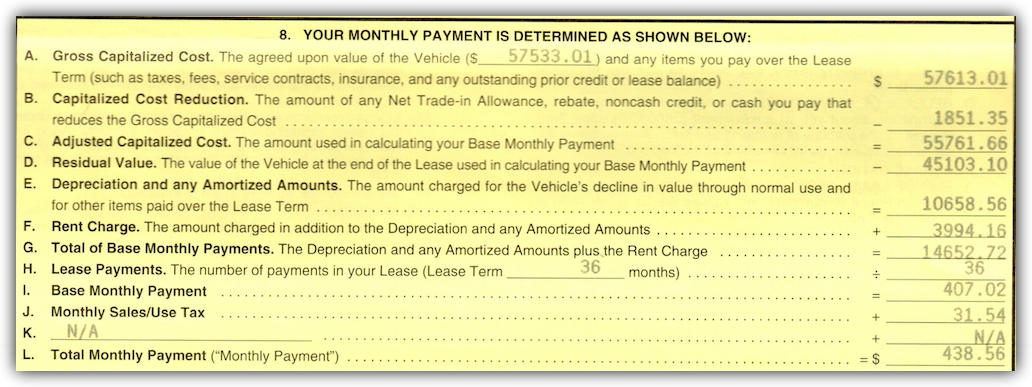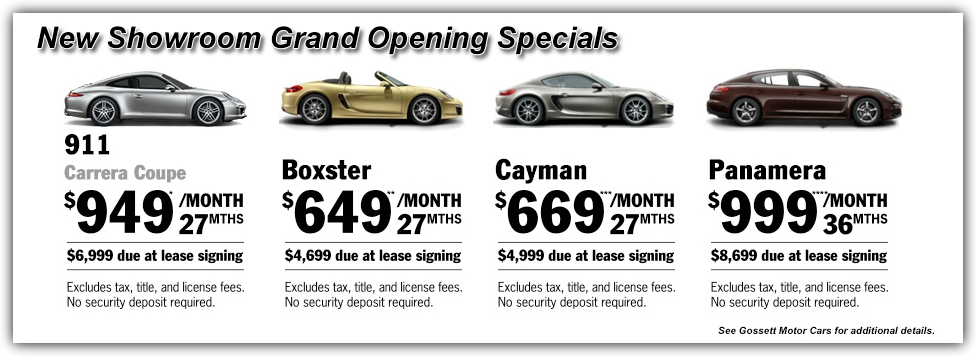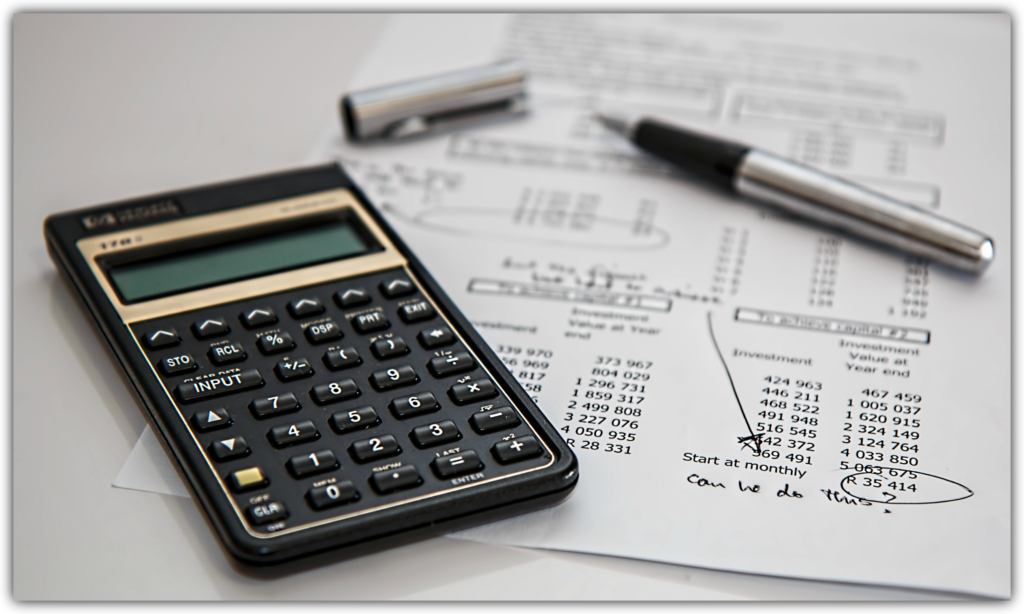It sounds too good to be true, right?
How is it possible to save that much money on a car lease that quickly?
First, you must understand why car dealers love leases.
“Who cares?” you say. “All I want is a low monthly payment.”
And that kind of mentality is exactly why dealers love leases. You’re too focused on the low monthly payment, making it easier for the dealer to add in extra profit on other parts of the lease contract that you don’t know about.
If you have just a basic understanding of where the dealer makes their money on most lease deals, you’ll know where you can save.
You could read only the first point below, and you’d already be in a position to save thousands of dollars on your next new car lease.
But you probably want to read the whole post for maximum savings.
Let’s get started then, shall we?
UNDERSTAND WHERE YOU CAN BARGAIN
POINT #1 – What you probably don’t know about leasing is that the price of the car you want to lease can be negotiated down first.
 Many people see an advertised lease deal, are happy with the monthly payment offered and will sign the lease without ever thinking about negotiating the price of the car.
Many people see an advertised lease deal, are happy with the monthly payment offered and will sign the lease without ever thinking about negotiating the price of the car.
The difference between negotiating the selling price down versus paying MSRP or “sticker” price, can be thousands of dollars — that’s thousands of dollars you won’t have to pay if you bargain first.
You won’t find the word “price” in the lease contract. It’s officially called the gross capitalized cost.
If you see a lease acquisition fee included in the gross capitalized cost, don’t worry. It’s a standard fee that the bank charges for setting up the lease. It’s different for each manufacturer, but generally will be around $650.
The gross capitalized cost can also include any of the following items, and you will want to decline these when the Finance Manager offers them to you when you are signing the lease contract.
Fees (upsell items) you should avoid:
- Extended warranties
- Paint protection
- VIN number etching
- Fabric protection
If the gross capitalized cost seems a lot higher than the price of the car, some of these upsell items may have been added in.
In summary, the important thing to understand about gross capitalized cost is that it is negotiable on a lease.
Next, we’ll talk about capitalized cost reduction, and how it can make a terrible lease deal look like an attractive one.
AVOID FOCUSING ON JUST THE MONTHLY PAYMENT
POINT #2 – You know those really sweet-looking lease deals you see advertised with monthly payments that look too good to be true? Those are made possible by capitalized cost reduction, or in other words, a large down payment.

Capitalized cost reduction is just a fancy finance term for any money paid up-front that reduces the price (remember, “price” is the same thing as the “gross capitalized cost”) of the car. Most common would be a down payment, a trade-in, or a manufacturer rebate or incentive.
Some dealers will advertise a high-end luxury car with a payment of $500/month, but if you read the fine print, you will need to put something like an $8,000 down payment (capitalized cost reduction) to get that deal.
Unless it’s a rebate or incentive, you want to pay as little capitalized cost reduction out of your own pocket as possible. Three main reasons:
1 – If you wreck the car, you will not get this money back
2 – If you try to get out of the lease by transferring the lease to someone else, you will probably not be able to get this money back
3 – Since you’re technically “renting” the car, you don’t want to dump that much up-front money into it. If possible, save that money and put in the bank or invest it elsewhere.
Now that you’ve successfully negotiated the starting price of your lease vehicle down, you can work on the next part of your lease deal, which is oftentimes where the dealer can make a ton of profit without you even knowing.
LEARN HOW INTEREST GETS CHARGED ON A LEASE
POINT #3 – There is interest charged on a lease, which is calculated using a number called the money factor, but you will never see this number advertised.
The money factor is a small number with a few decimal places, for example, 0.0010. Just think of it as the interest rate for a lease.
Personally, I like seeing the APR% – it makes more sense to me than the small money factor number.
Thankfully, it’s very easy to convert money factor into APR%. To get the APR% (interest rate), multiply the money factor by 2400.
The money factor is usually somewhere between 0.0010 (0.0010 x 2400 = 2.4% APR) and 0.0020 (0.0020 x 2400 = 4.8% APR).
The money factor does not appear anywhere on the lease contract, and by law, the dealer does not have to tell you what it is. It is based on your credit score, just like the APR% you would qualify for on a loan.
POINT #4 – Because dealers don’t have to legally disclose the money factor, they often mark it up to make extra money.
Make sure to ask the dealer what the money factor is on your lease deal. Then do a quick Google search on your specific vehicle to see what it should be to make sure it’s not marked up. For example, search “BMW M3 money factor.”
Some dealers will not provide this info. Insist that they provide it or you will not sign the lease deal.
There is a time and a place to be a firm negotiator. In the next section, we’ll discuss how you can save time, and be in a stronger position to negotiate a strong lease deal.
STAY AT HOME TO STAY IN POWER
POINT #5 – Do all your lease negotiations from home through email. Don’t go to the dealer.
You have the most power when you negotiate from home. There is no pressure to buy, and you will be able to look over the lease numbers on your own time, at your own pace.
Contact local dealers who have the car you want either via email or their website. Make sure to ask them to include the residual value, money factor, and any capitalized cost reduction being used in calculating their lease deal.
Ask about any current rebates or incentives being offered for leases on the car you want. For example, Audi often runs a lease promotion in which they will pay for your first month’s lease payment.
Then go use one of the many available lease calculators available online to check the numbers, or go to a leasing forum like leasehackr.com or edmunds.com and post the lease numbers your dealer offered to have other members look them over to see if you’re getting a good deal.
It feels very good to sign a lease contract knowing that you got a great deal.
Every time you make your monthly lease payment, you’ll think to yourself, “I can’t believe I’m driving this much car for this little money!”
Commuting to work will become more pleasurable, your kids will be proud getting dropped off in front of school in the morning, and your friends will ask you how you managed to afford that new luxury car.
Remember, you’re the consumer. You can walk away from any deal you don’t like, and any salesperson who rubs you the wrong way.
Now go out and find that dream car you’ve always wanted, and please post any questions you have in the comments and I will answer them personally.

